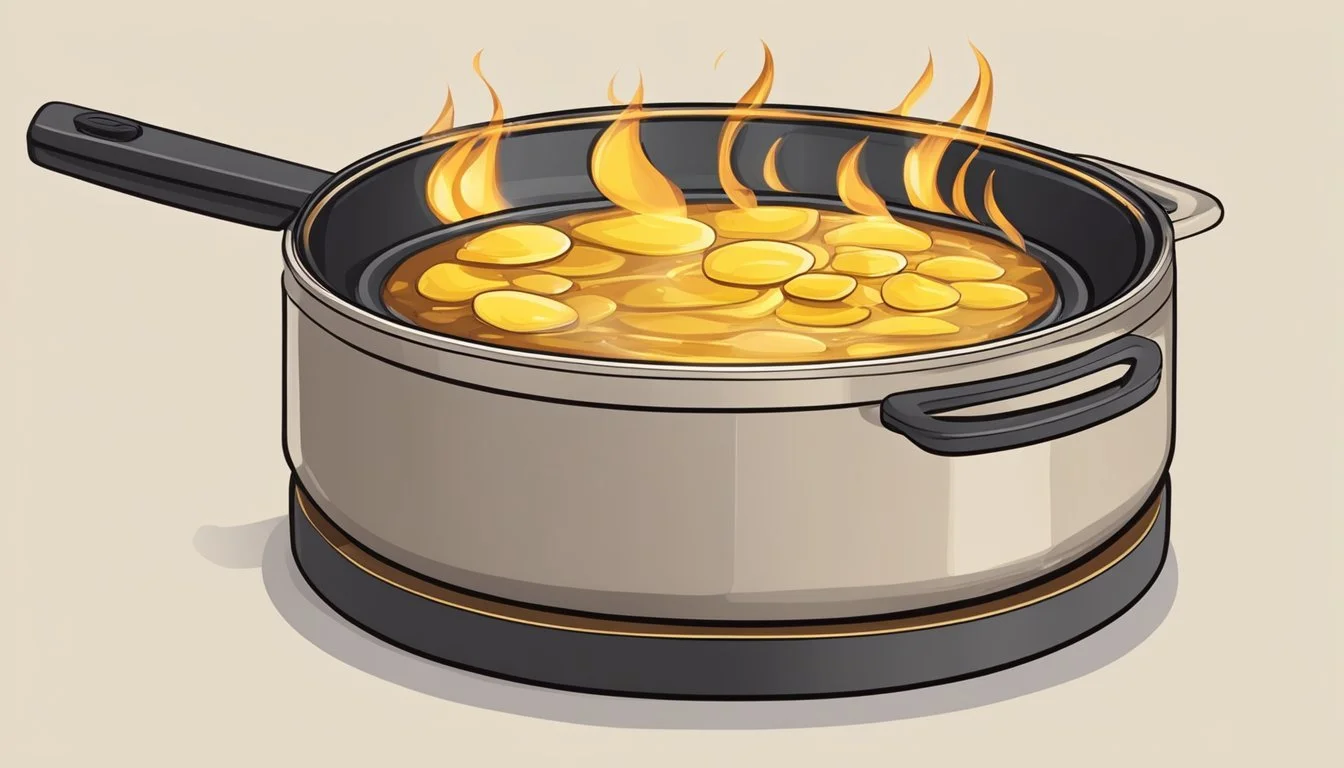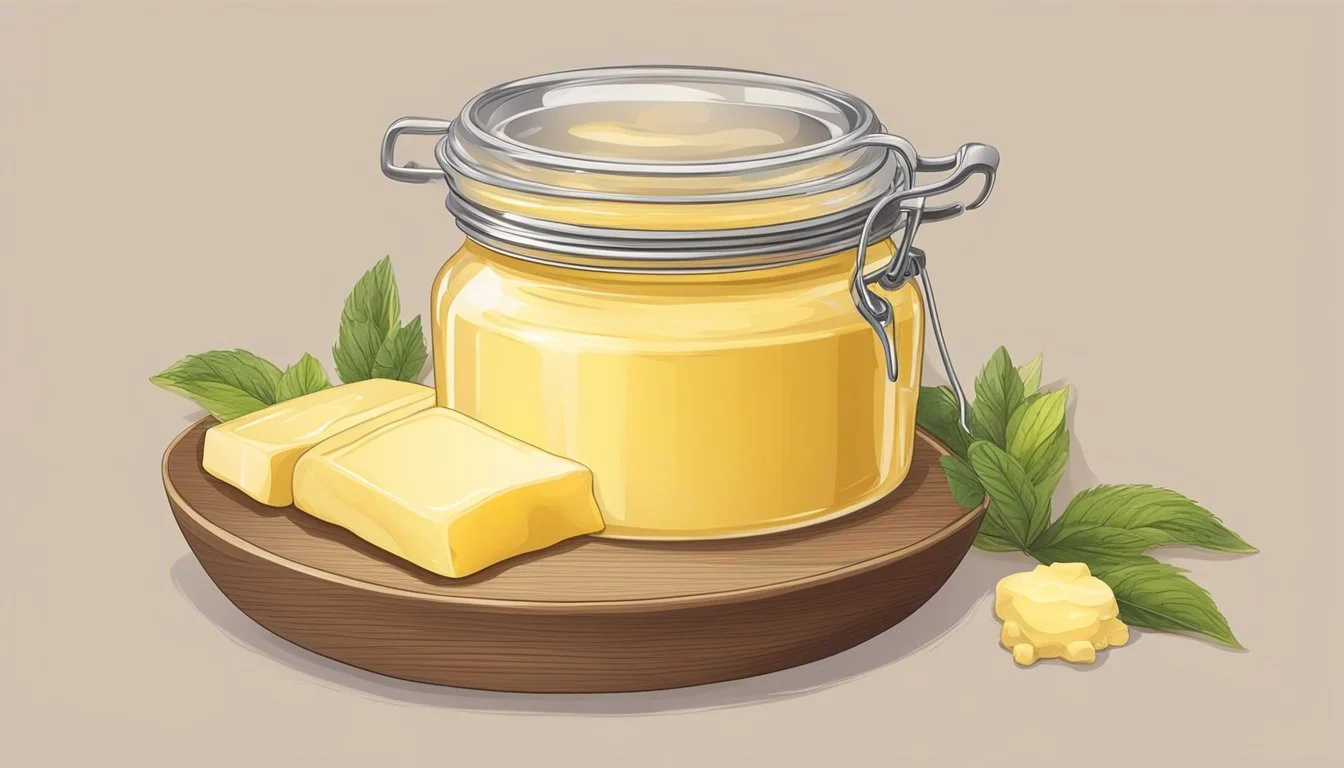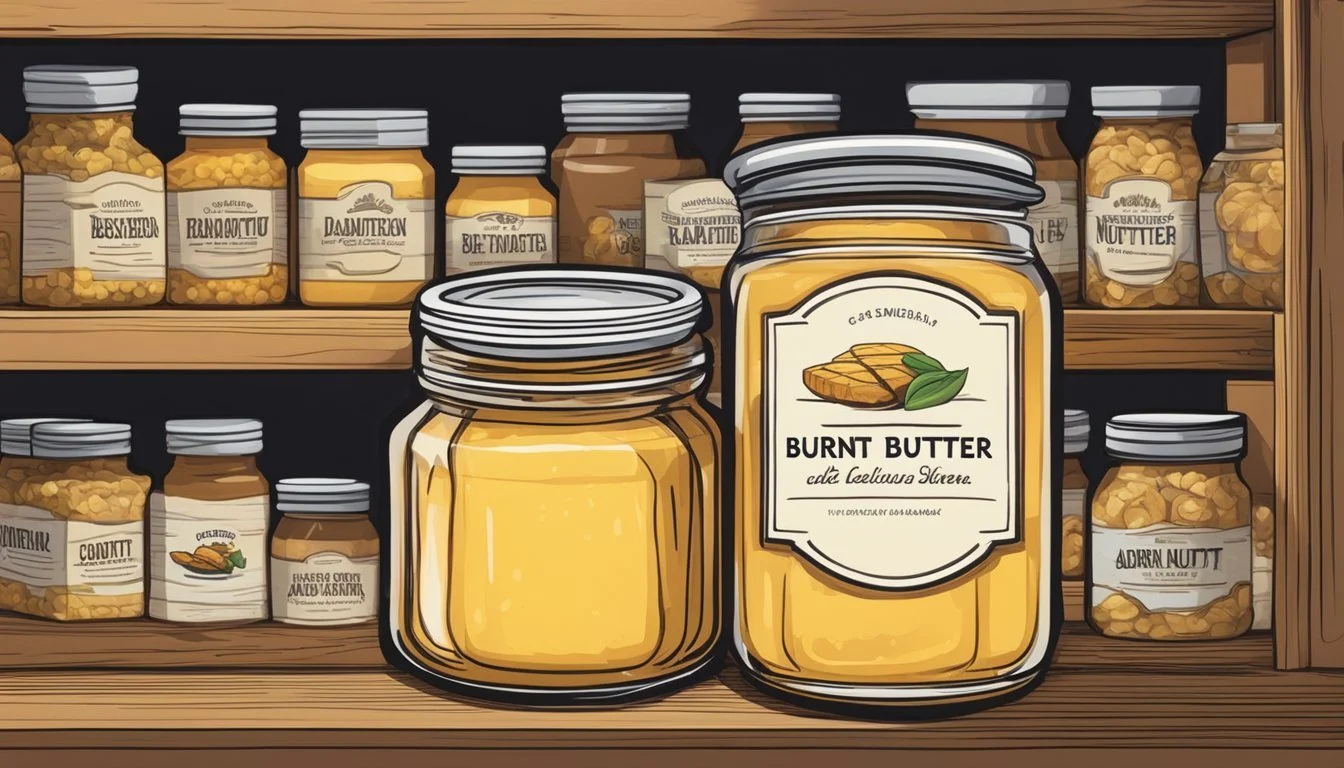Saving Burnt Butter
Rescuing Nutty Notes without the Bitter Edge
Mastering the art of brown butter can elevate a simple dish with its rich, nutty flavor, but rescuing burnt butter requires a bit of culinary acumen. Brown butter, known for its golden hue and toasty aroma, is the result of cooking butter just enough to toast the milk solids without advancing to an acrid burn. The transformation of butter into this flavor powerhouse emerges as the water content evaporates and milk solids start to caramelize.
However, the line between perfectly browned and burnt is fine, and a moment's inattention can tip the scale towards bitterness. When butter progresses past the point of browning, it doesn’t have to spell disaster. The nutty essence of brown butter need not be lost, and there are techniques to salvage what remains without compromising on taste.
One key to saving burnt butter lies in the swift separation of the darker bits from the golden fat. As the milk solids darken, they can impart an unwanted bitterness, but immediate action can halt the process, preserving the desirable flavors. The proper straining method can remove the burnt particles, ensuring that the nutty, toasted essence of brown butter remains intact for culinary use.
Understanding Brown Butter
Brown butter, or beurre noisette, is a culinary delight known for its rich, nutty flavor, achieved when the milk proteins in butter brown during cooking. This process is a fine balance of chemistry and timing, transforming the butter into a gourmet ingredient.
The Science of Browning Milk Solids
When butter is heated past the melting point, it enters a phase where the milk solids separate and start to brown. These solids are primarily milk proteins and sugars, which begin to undergo a transformation at temperatures above 302°F (150°C). The success of brown butter lies in controlling the heat to brown—rather than burn—these milk solids, resulting in a harmonious blend of flavor and aroma.
Maillard Reaction and Flavor Development
The browning of butter is largely due to the Maillard reaction, a chemical process between amino acids and reducing sugars that also gives meat its savory crust and bread its golden crust. During this reaction, hundreds of flavor compounds are created, contributing to the butter's characteristic nutty aroma and complex taste. Achieving the perfect Maillard reaction requires careful heat management to ensure a delicious outcome without progressing to burning.
Preparation Techniques
Proper preparation is essential to achieve the perfect brown butter without burning it. One must select the appropriate butter, use the correct pans and utensils, and apply precise temperature control.
Choosing the Right Type of Butter
When browning butter, unsalted butter is preferred due to its ability to allow for controlled seasoning and the absence of added salts that may affect the browning process. They should opt for high-quality unsalted butter for a more consistent result.
Optimal Cooking Utensils and Pans
The choice of pan is crucial in browning butter. They should use a light-colored, heavy-bottomed pan, such as a medium frying pan, to easily monitor the color change. This type of pan distributes heat evenly, reducing the risk of burning.
Utensils: Use a heat-resistant silicone spatula or wooden spoon for stirring.
Heatproof bowl: Have a bowl ready for immediate transfer to stop the cooking process.
Temperature Control and Timing
Controlling heat is vital. They should melt the butter over medium heat, watching closely as it transitions from foamy to golden brown. They should remove the pan from the heat once golden flecks appear and pour it into the heatproof bowl to halt the cooking.
Medium heat: Set stove to a 4 or 5 on a scale of 1-10.
Visual cues: Look for the foam to subside and a nutty aroma to develop.
Preventing Burnt Butter
Preventing butter from burning during the cooking process is essential to achieve that desirable golden brown color and rich, nutty flavor. Let's explore effective techniques to ensure butter reaches its full potential without crossing into bitterness.
Recognizing the Stages of Butter Browning
Butter goes through distinct stages as it cooks: it starts with a foamy, yellow appearance, transitions into a golden hue, and finally to a rich brown color. Observant cooks can detect these stages by the butter's color and the release of a nutty aroma. A visual cue to look for is the reduction of foam, which signifies it's time to be extra vigilant as the butter nears its perfectly browned state.
The Role of Continuous Stirring
Stirring is critical when browning butter. It ensures even heat distribution and prevents the milk solids from settling and burning at the bottom of the pan.
Key Technique: Swirl the pan occasionally or stir consistently with a spatula.
Stirring not only aids in achieving an even golden brown color but also allows the cook to continually assess the butter's color and aroma, which are indicators of its doneness.
Using Residual Heat to Your Advantage
The residual heat of the pan can be a tool or a downfall in the process of browning butter. To leverage it:
Remove pan from heat before the butter reaches the final desired color.
Transfer butter to a cool bowl immediately to stop the cooking process.
By moving the butter away from the consistent heat of the stove and utilizing the residual heat of the pan, one can achieve that perfect brown without the risk of burning, allowing the residual heat to finish the process gently.
Culinary Applications
Brown butter, with its deep nutty flavor, transforms a variety of dishes across culinary applications. Its complexity elevates recipes beyond their basic counterparts.
Incorporating into Baked Goods
Bakers frequently use browned butter to infuse a rich, caramelized flavor into baked goods. In cookies and cakes, browned butter adds a depth that traditional butter cannot match. To capitalize on its flavor in baking, brown butter should cool slightly before being combined with other ingredients.
Cookies: The nutty flavor of brown butter complements the sweetness of cookies.
Cakes: Substituting brown butter in cake recipes introduces a new flavor dimension.
Enhancing Savory Dishes with Brown Butter
In savory dishes, browned butter acts as a flavor enhancer. One can drizzle it over roasted vegetables to add a hint of nuttiness or stir it into pasta sauces to create a richer, more decadent meal.
Roasted Vegetables: A light drizzle of brown butter before serving enhances the natural flavors.
Pasta Sauces: Incorporating browned butter into sauces results in a luxurious texture and a complex flavor profile.
Creative Uses in Modern Cuisine
Chefs in modern cuisine innovate by using browned butter in unexpected ways, taking advantage of its robust taste and olfactory appeal. It can serve as a base for creative pasta sauces, or, for a twist, it could be infused into homemade ice creams for a savory-sweet delight.
Pasta Sauce: Experimental recipes might include brown butter as a key element for untraditional sauces.
Unique Pairings: Incorporating browned butter into desserts such as ice creams or custards yields surprising and delightful contrasts.
Storage and Shelf Life
Proper storage maximizes butter’s shelf life, preserving its quality taste without bitterness. Whether you're keeping burnt butter with its complex, nutty flavor or regular butter, understanding the effects of temperature and container choice is essential.
Refrigeration vs. Room Temperature
Refrigerated Storage: Butter is best preserved in the refrigerator, ideally at about 40°F (4°C). In this cool environment, it maintains its quality texture and flavor while reducing the risk of spoiling. An airtight container is recommended to shield the butter from absorbing odors and to prevent exposure to air.
Advantages of Refrigeration:
Slows down spoilage
Keeps butter fresher for longer
Room Temperature Storage: While not ideal for long-term preservation, room temperature storage of butter is acceptable for a limited period. Storing butter in a butter dish helps shield it from contaminants and maintains easier spreadability than refrigerated butter.
Room Temperature Considerations:
Accessible for immediate use
Shorter shelf life
Storing for Extended Use
To preserve butter for an extended period, two options are viable:
Freezing: Butter can be safely frozen for future use, with unsalted varieties maintaining quality for up to one year. Storage should be in the butter's original packaging or wrapped in aluminum foil to protect from freezer burn.
Glass Jar: Clarified butter, such as ghee, can be stored in a glass jar without refrigeration due to removed moisture and milk solids.
Freezing Steps:
Wrap tightly in aluminum foil or original packaging
Place in the coldest part of the freezer
Ghee Storage Tips:
Use a clean, dry glass jar
Store at room temperature away from direct sunlight
Nutritional and Dietary Considerations
When attempting to salvage burnt brown butter, one must consider the balance between flavor and nutritional impact. This section analyzes the caloric and fat content, the profile of vitamins and minerals present in butter, and the ways to balance these attributes for a healthier diet.
Caloric and Fat Content Analysis
Butter primarily consists of fat, with a significant amount of calories coming from this macronutrient. Here is a concise breakdown:
Calories: Approx. 100 kcal per tablespoon
Total Fat: 11-12 grams
Saturated Fat: about 7 grams
Monounsaturated Fat: 3 grams
Polyunsaturated Fat: 0.5 grams
Cholesterol: 30 mg
It's evident that butter is high in saturated fat and cholesterol, which are factors to watch the consumption of for cardiovascular health.
Vitamins and Minerals in Butter
Butter provides certain vitamins and minerals that are essential in human nutrition. The following are some nutrients found in butter:
Vitamin A: Important for skin health and vision
Calcium: Essential for strong bones and teeth
Iron: Crucial for the transportation of oxygen in the body
Potassium: Helps regulate fluid balance and blood pressure
It is important to note that while butter contains these nutrients, it should still be consumed in moderation due to the high fat content.
Balancing Flavor and Health
To balance the rich flavor of butter with dietary concerns:
Consider serving size to manage caloric intake.
Explore the use of nut butters as alternatives that can offer varied nutritional benefits such as higher protein or different fatty acid profiles. For example:
Cashew Butter: Offers around 94 kcal, with fat around 7.9 g per tablespoon. It also provides a slight sweetness, lessening the need for added sugars in recipes.
Almond Butter: Delivers a mix of vitamins, minerals, and provides protein, making it a heart-healthy alternative.
When incorporating butter or nut butters into recipes, monitoring portion sizes alongside the overall dietary pattern can help maintain a balance between desirable flavors and nutritional health.
Advanced Tips and Tricks
Mastering the art of browning butter hinges on control and precision. This section delves into the strategies for consistently achieving perfect brown butter, explores the role of substitutions, and addresses common errors to avoid during the process.
Achieving Consistent Results
Consistent heat is vital for making brown butter. A candy thermometer can help monitor the temperature closely, maintaining it at 248°F (120°C), which is ideal for achieving that distinct nutty flavor without progressing to burning. It's also wise to use a light-colored pan to better see the color change, and to stir constantly for an even cook. These proactive measures ensure consistently delicious results.
Substitutions and Variations
Those wishing to experiment can try substituting brown butter for clarified butter in recipes to add depth of flavor. However, one must remember that brown butter contains less water due to the cooking process, which can affect the moisture level in recipes. Adjust other liquid ingredients accordingly to maintain the balance. Brown butter can also be substituted with the same amount of regular butter or oil in recipes that do not rely on its unique flavor.
Addressing Common Pitfalls
Frequently Asked Questions often involve rescuing butter that's on the brink of burning. Removing the pan from heat as soon as browning begins and transferring the butter to a cold container can stop the cooking process. If the butter has only slightly overcooked, pass it through a fine sieve or cheesecloth to remove burnt particles. For those encountering difficulties, note that practice increases skill, and careful observation learns from mistakes to improve future attempts.
Brown Butter in World Cuisines
Brown butter or beurre noisette transcends borders, enriching a myriad of international dishes with its deep, nutty flavor. From savory French classics to American baked goods, this culinary component is prized for its ability to heighten the taste profile of various recipes.
French Beurre Noisette
In French cuisine, beurre noisette is a cherished ingredient that can transform the simplest dishes into gourmet experiences. It imparts a rich, hazelnut-like taste to sauces and is a key component in both sweet and savory dishes. French chefs often incorporate beurre noisette into pasta dishes, lending a warm, toasted essence that elevates the meal.
Italian and Mediterranean Influences
Italian and other Mediterranean culinary traditions appreciate the aromatic lift that brown butter brings, especially to pasta courses. In these cuisines, it is typically combined with sage and poured over filled pasta like ravioli, complementing the richness of the filling with its nutty flavor. It's not uncommon to find brown butter enhancing the taste of risottos and vegetable sautés as well.
Brown Butter in American Baking
American bakers revere brown butter for its ability to add a new layer of flavor complexity to baked goods. Recipes for blondies, muffins, and pie crusts often call for brown butter to provide a sophisticated twist. Baking with beurre noisette is a simple technique to amplify the taste of traditional recipes, making it a beloved secret weapon in kitchens across the United States.









